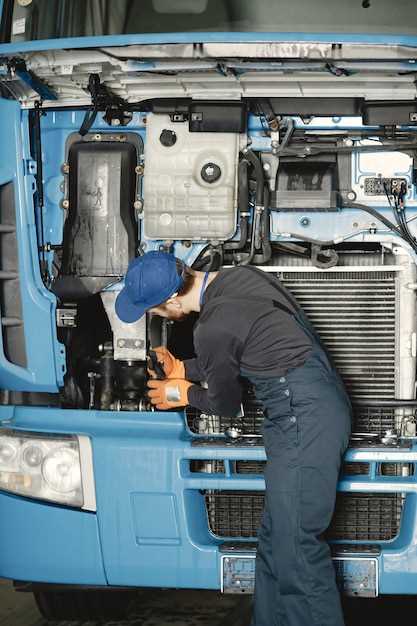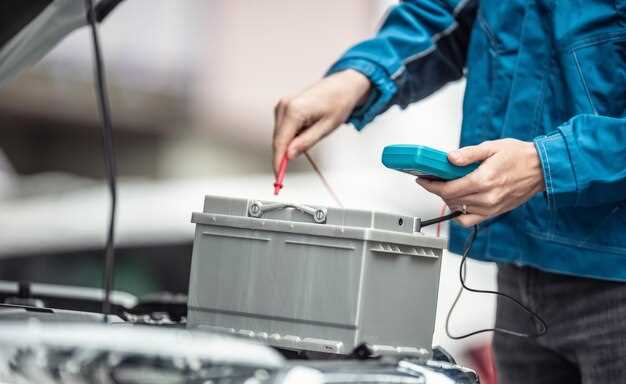
Maintaining the battery of heavy-duty trucks is crucial for ensuring optimal performance and longevity. Heavy-duty trucks operate under challenging conditions, which can put significant strain on their electrical systems. Regular maintenance not only enhances reliability but also minimizes the risk of unexpected failures, ultimately contributing to safer and more efficient operations.
One of the key aspects of battery maintenance involves regularly checking the terminals for signs of corrosion or loose connections. Corroded terminals can lead to poor electrical conductivity, which can hinder the overall performance of the battery. Keeping the terminals clean and secure is essential for maintaining a strong connection and ensuring that the battery performs at its best.
Additionally, it’s important to monitor the battery’s fluid levels in lead-acid batteries. Maintaining proper electrolyte levels helps prevent damage and extends the battery’s lifespan. If the fluid levels drop below the recommended mark, adding distilled water can help restore them to optimal levels. By taking these maintenance steps, truck operators can ensure that their batteries remain reliable and efficient for the heavy demands placed on them.
Regular Inspection Procedures for Truck Battery Terminals

Regular inspection of truck battery terminals is crucial for ensuring optimal performance and longevity of the battery. The terminals are the connection points between the battery and the truck’s electrical system, making them susceptible to corrosion and buildup that can impede electrical flow.
1. Visual Inspection
Begin with a visual examination of the battery terminals every month. Look for any signs of corrosion, which often appears as a white, ashy substance around the terminal connections. This buildup can significantly reduce the battery’s efficiency and should be addressed immediately.
2. Cleaning the Terminals
If corrosion is observed, it is essential to clean the terminals thoroughly. Disconnect the battery cables, starting with the negative terminal. Use a mixture of baking soda and water to neutralize the acid, and apply it to the corroded areas with a brush. Carefully scrub the terminals and the battery posts until they are clean and free of debris. Rinse with water and dry completely before reconnecting.
3. Tightening Connections
After cleaning, inspect the tightness of the terminal connections. Loose connections can lead to intermittent power supply, which may cause starting issues. Use a wrench to ensure that both the positive and negative terminals are securely tightened, but be cautious not to overtighten, as this can damage the terminals.
4. Checking for Wear and Damage
Inspect the battery cables for fraying, cracking, or other signs of wear. Damaged cables may hinder electrical flow and should be replaced immediately to prevent potential failures.
5. Monitoring Battery Performance
Keep an eye on the battery performance as part of your routine. If you notice frequent starting issues or dimming lights, it may indicate a problem with the terminals or the battery itself. Regular performance checks can preempt more significant issues down the road.
Incorporating these inspection procedures into your routine maintenance schedule will help maintain the integrity of your truck’s battery terminals, ensuring reliable operation and extending the life of your battery.
Best Practices for Cleaning and Protecting Battery Connections
Maintaining clean and secure battery connections is essential for the efficient operation of your truck’s electrical system. Over time, corrosion can build up on the battery terminals, leading to poor performance and potential failure. Here are some best practices to ensure optimal battery connectivity.
1. Regular Inspection
Schedule routine inspections of your battery connections. Look for any signs of corrosion, which may appear as a white, powdery substance around the terminals. Identify loose or frayed connections that could affect the power supply to your truck.
2. Use Proper Cleaning Supplies
When cleaning battery terminals, use a mixture of baking soda and water to neutralize any acidic corrosion. Apply the solution with a brush, paying special attention to the connection points. A wire brush or terminal cleaning tool can help remove stubborn buildup.
3. Disconnect the Battery Safely
Before beginning any cleaning work, ensure the truck is turned off, and disconnect the negative terminal first to prevent accidental short circuits. Once cleaned, reconnect the positive terminal before reattaching the negative terminal.
4. Apply Protectant
After cleaning, apply a thin layer of petroleum jelly or specialized battery terminal protectant to inhibit future corrosion. This step is crucial for ensuring a long-lasting connection and safeguarding against moisture.
5. Secure Connections
Ensure that all connections are tight. Loose connections can lead to arcing and excessive heat, damaging both the battery and the truck’s electrical components. Use a torque wrench to tighten connections to the manufacturer’s specifications.
6. Monitor Battery Health
Finally, monitor the overall health of your battery regularly. Conduct load tests and check the voltage to ensure that your battery operates efficiently under the truck’s demands. If any issues persist, consult a professional.
By adhering to these best practices, you can significantly extend the lifespan of your truck’s battery and enhance overall performance. Keeping battery connections clean and secure will prevent unnecessary downtime and ensure that your heavy-duty truck runs reliably.
Signs of Wear and When to Replace Heavy-Duty Truck Batteries

Heavy-duty truck batteries are crucial for reliable performance and operational efficiency. Recognizing the signs of wear can prevent unexpected breakdowns and costly repairs. Here are some key indicators to watch for:
- Slow Engine Crank: If the truck’s engine is slower to start than usual, it may indicate a weakening battery.
- Corrosion Buildup: Check for white, ashy deposits on battery terminals, which can hinder connections and overall performance.
- Swelling or Bulging: The battery case may swell due to internal damage or overheating, indicating the need for immediate replacement.
- Fluid Leaks: Any leaks of battery acid or other fluids can signal severe battery degradation.
- Frequent Jump Starts: If the truck frequently requires jump-starts, the battery may no longer hold a charge effectively.
- Warning Lights: Dashboard warning lights related to battery voltage should never be ignored, as they can indicate underlying issues.
Monitoring these signs is essential for maintaining your heavy-duty truck’s performance. If you observe one or more of these indicators, consider the following guidelines for battery replacement:
- Age of the Battery: Most heavy-duty truck batteries have a lifespan of 3 to 5 years. If your battery is nearing its end of life, it may be time for a replacement.
- Performance Test: Regularly conduct a load test to evaluate battery health. If it fails, replacement is necessary.
- Professional Inspection: Schedule routine inspections with a technician to assess battery condition and functionality.
Timely replacement of worn-out batteries not only enhances truck performance but also minimizes downtime and repair costs.



